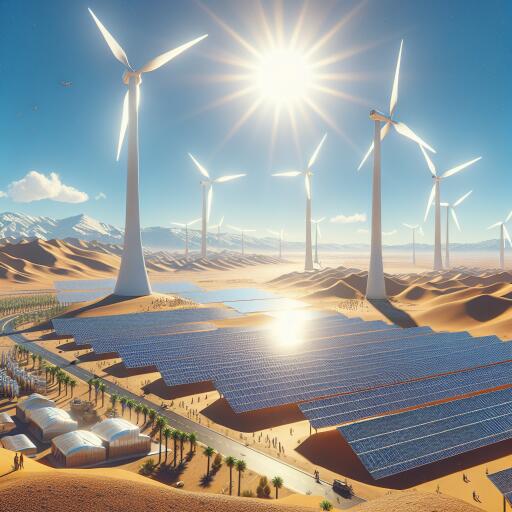
Uzbekistan Aims To Boost Number Of Solar, Wind Power Plants In 2025
Uzbekistan is making significant strides in its commitment to advancing energy sustainability and increasing the proportion of renewable resources in its energy portfolio. As part of a broad initiative to overhaul the energy sector, plans are in place to expand the capacity of solar and wind power installations substantially by 2025.
A critical component of this endeavor includes the integration of energy storage systems with a capacity of 1,800 megawatts (MW). These systems are crucial for enhancing the reliability and efficiency of the renewable energy infrastructure, facilitating the country’s shift towards cleaner energy technologies.
By the end of the coming year, Uzbekistan anticipates reaching a production milestone of 12 billion kilowatt-hours (kWh) in green energy. This level of output is projected to sufficiently supply approximately 5 million households annually, while simultaneously cutting down carbon emissions by an estimated 6.5 million tons. These reductions highlight a notable move towards decreasing the nation’s carbon footprint.
Further into the future, by 2030, the country’s ambitious plans include constructing 19,000 MW of renewable energy facilities. This expansion is expected to elevate renewables to 54 percent of Uzbekistan’s overall energy mix, marking a significant increase that underscores the transition to sustainable energy solutions.
In addition to focusing on solar and wind power, there is also a comprehensive strategy to develop more than 2,000 small and micro hydropower plants. These projects will be developed in collaboration with the private sector within the next two years, aligning with Uzbekistan’s goals to diversify its energy sources and enhance energy accessibility.
Moreover, Uzbekistan plans to diversify its energy mix further by introducing additional thermal power capacity. By 2027, the country expects to commission five new thermal power plants, collectively contributing an added capacity of 4,183 MW. This addition aims to support the nation’s growing energy needs while ensuring a balanced and reliable energy supply.
These extensive energy projects are not just part of Uzbekistan’s national strategy for sustainable development but also a reflection of the broader global movement towards embracing renewable technologies. As these initiatives unfold, Uzbekistan is poised to become a notable player in the realm of green energy, setting an example for energy transition in Central Asia.





Leave a Reply